INTERVIEW WITH NANCY FIRE
Designer, unifier, and creative collaborator Nancy Fire, explains why today’s trends can be considered lifestyle
pockets
representing how consumers live their lives.
Nancy Fire says she is a designer, unifier, and creative collaborator passionate about color, design and
sustainability.
She has a deep understanding of changes and developments in lifestyle trends, allowing her to help companies
capitalize
on changing market opportunities. Fire co-founded Design Works International and is a past design director for HGTV
and
HGTV HOME. She’s also active on the boards of the Sustainable Furnishings Council and The Bienenstock Furniture
Library
and an advisory board member of the Fashion Institute of Technology.
Community Design Approach
Fire explained that she’s come to look at trends differently than she did earlier in her career. “The present
version of
me and my company, Nancy Fire Designs (www.nancyfire.com),” she said, “views trends through the lens of
collaborations
and combinations of aesthetics that work together to build a community approach to design. We are heading in the
right
direction by looking at these communities as realistic lifestyle trends.
“Furnishings have become more casual and livable, even at the extreme luxury end. There’s little interest in
creating
rooms that don’t appear to be used.”
“Forward-thinking businesses today rely on collaborations. You may laugh at this analogy, but did you watch the
recent
Super Bowl commercials? Hardly any were about a company selling a product or thing. They featured a celebrity
working
with a musician or actor to bring different audiences into what might be considered a collaborative brand. Companies
used to be afraid to work closely with others from within or outside their industry. Today, it’s a whole new world
of
partnerships. And that’s how I feel about trends these days. There are reasons for today’s trends. There are fewer
fads
and more lifestyle pockets that reflect how consumers live their lives.”
Fire says a good retail example is Terrain (www.shopterrain.com), part of the Anthropologie family of brands. Its
website describes the brand as ‘…a space devoted to nature, curated for the garden and home, and made to merge
beauty
and utility.’ “It’s a concept that appeals to older and younger age groups, bridging the gap between the
generations,”
added Fire. Retail locations are ‘situated in lush indoor-outdoor environments, often featuring an on-site nursery,
garden café, and private event space.’
“Not everyone can afford what they have to offer, but my point,” added Fire, “is that there’s a duality inherent in
their brand that’s likable, more sustainable, connected to the outdoors, and a little bit more circular.”

Arbiters of Style
The last time Furniture World spoke to Nancy Fire about changes in design trends and consumer preferences was in
2018.
We asked her to pick up where she left off.
She explained, “The pandemic changed everything about how consumers choose to furnish their homes. They had time to
look
around their living spaces and realized that small changes could help them feel good. Wellness concerns
proliferated,
and consumers increasingly became their own arbiters of style, coming to view their homes as havens. Influencers
popped
up on Instagram, telling people how to improve their homes, raising the level of confidence shoppers have in their
decorating abilities. The home furnishings business boomed.
“We’re past that boom phase now, and it feels like we are almost back to 2019, except a lot more people are working
from
home.
“Now, whether a retailer is in New York City or rural Iowa, its customers can view trending designs on TikTok, X,
and
Instagram. They know what’s hip and happening, even if they are not yet ready to embrace a trend fully. People know
what
they like, and that is true whether they purchase at a family-owned furniture store, an Ashley Home Store, Wayfair,
or
Anthropologie.”
“Quiet luxury is here to stay. It’s luxury that’s under the radar and not ostentatious. Furniture and home
accessories
are definitely a big part of that.”
Quiet Luxury
Fire says shoppers are looking for quiet luxury. “What this means,” she explained, “is making their homes as cozy
and
soothing as can be, filled with items that make them feel good physically and mentally. Quiet Luxury is often
supported
by items that don’t come to mind immediately when people think of furniture stores. It’s a consideration that our
industry should address. ‘Is that candle in the proper place? Is that the scent they want in their bedroom? Are
those
the colors that make them feel good?’ It’s really about consumers’ desire to coordinate their surroundings in ways
that
make them feel in control. Quiet luxury is here to stay. It’s luxury that’s under the radar and not ostentatious.
Furniture and home accessories are definitely a big part of that.”
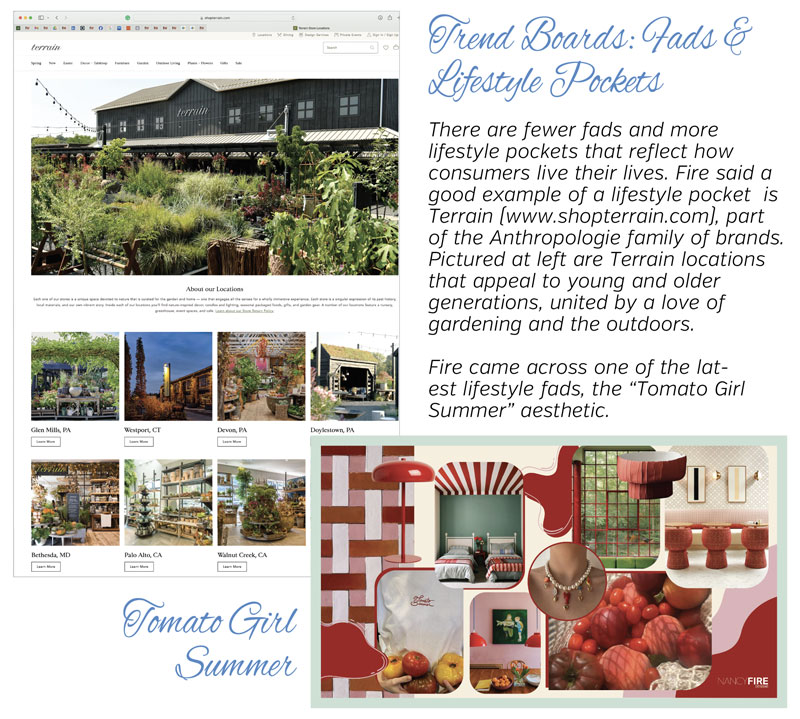
Upcycling & Recycling
“Consumer interest in upcycling and recycling is on the rise. It’s a vintage story mixed with a modern story, a
combination of elements that create communities of trends.
“Shopping for upcycled and recycled goods is another lifestyle choice. Most people have at least one vintage
upcycled or
recycled furniture piece in their home, acquired from a relative, purchased online or at a flea market. They
combine
these pieces with new items to give vintage appeal to a modern aesthetic, putting their own spin on a personalized
mix.
“Many of the furnishings stores I recently visited during a trip to the West Coast had a vintage section or
featured a
local artisan event to bring in traffic. Whether it’s an invitation to meet the ceramicist or a book signing,
these
events add content and context. They bring people in to experience a store and tell the kinds of style stories
customers
are interested in knowing about.
“Now, whether a retailer is in New York City or rural Iowa, its customers can view trending designs on
TikTok, X, and
Instagram. They know what’s hip and happening, even if they are not yet ready to embrace a trend fully.”
“Retailers that sell upcycled and vintage items are becoming much more common, especially with fashion retailers.
For
example, Fred Segal in LA (www.fredsegal.com), a high-end fashion brand, incorporates home items in an upcycled,
recycled resale area. Included might be fashion items, an old pair of Levi’s or a vintage glass pitcher. I believe
that
more furniture retailers will discover the value of offering customers this kind of hybrid experience. It appeals
to
people who shop for vintage, want to keep furniture out of landfills, and also need new home furnishings.
“How it’s implemented in everyday home furnishing retail,” said Fire, “depends on the retailer. There will be more
timeless, designer furniture items—iconic designs—resold by higher-end furniture retailers. Some may mix these in
with
new furniture that looks vintage—what might be called knockoff vintage—at lower price points. There are
opportunities
for furniture retailers to do some sort of resale at all price points because that’s the way the world is going.
Purchasing a piece that has been given a second or third life is appealing. It’s a different way the growing
population
of self-designers is coming to look at sustainability and circularity.
“These areas can be retailer traffic builders,” continued Fire. “Especially for younger generations, this concept
can
provide constantly changing retail experiences that bring shoppers back. It doesn’t have a flea market feel.
Instead, it
can be curated, inviting and promotable vintage designed so that people from all walks of life will find something
important to them.”
Furniture World asked Fire if providing recycled, upcycled vintage could be one of those Super Bowl-type artist
collaboration opportunities she mentioned earlier.
“Certainly,” she replied. “It’s an opportunity to co-brand with talented artisans or a local business
specializing
in
collecting and refinishing vintage items, the kinds of items often sold in small shops or online marketplaces.”
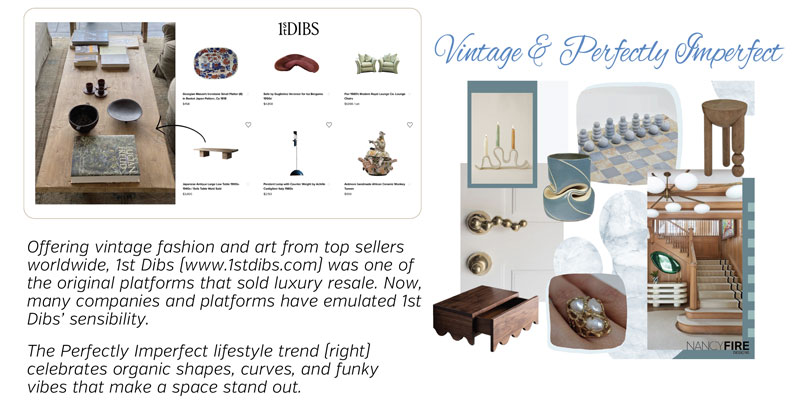
Merchandising Ideas
“Retailers and brands need to be realistic about how they approach trends. Years ago, trends tended to be fluffy,
focusing on high-end aesthetics. My approach when working with clients is to focus on what will sell, who will buy
it,
where people will buy it, and why.
“Sometimes there’s a place for new and interesting teaser merchandise that attracts attention above the commercial
level. Other times, it’s better to change the color palate without getting too crazy. At its best, finding a
balance
between manufacturer, retailer, and realistic sales is the goal. My mother was in retail, and I still hear her
voice
saying, ‘You have to know when to get in and when to get out.’ In other words, know what’s a fad, what’s a trend,
and
how long to stay in. During COVID, the trends stayed longer. Now my clients are asking more basic questions: ‘Who
are
we, why are we, when are we going to do this, and what are our lifecycles going to be?’ It’s a cleansing period. I
believe that after the uncertainty of the election, coming out of 2024 and into 2025, there’ll be a lot of
significant,
exciting changes.”
Fire suggested that retailers might follow their customers’ lead by doing more editing and curating. “With all the
choices out there, that’s become more important,” she emphasized. “Whether you’re editing and curating in a store
or
online, it’s all about imagery. People know within 30 seconds of entering a store whether they want to continue
shopping
there. That part of the experience needs close attention.
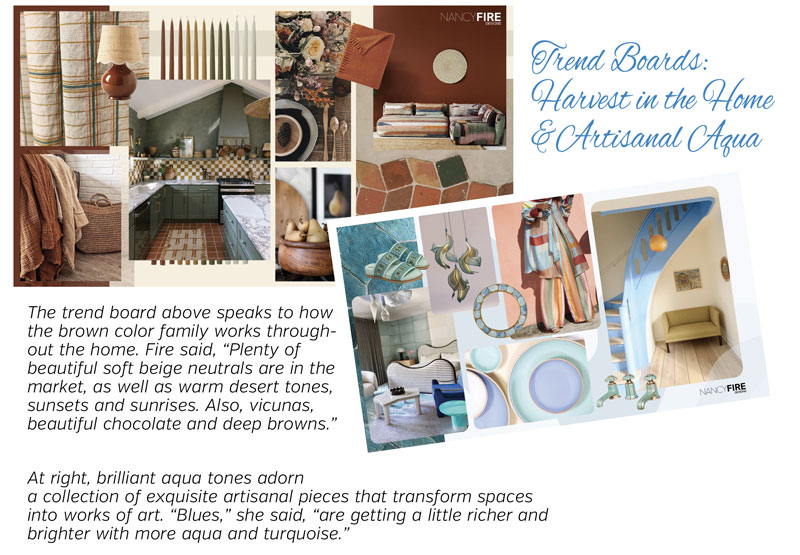
“It’s a good practice to double down on winning products and eliminate losers. But at the same time, it is
important
to
realize that the winner might not continue to win, and it might not be a winner for the broadest group of
customers.
Retailers and manufacturing brands often make the mistake of knocking themselves off with products that are so
closely
related that they split their business. Instead, it’s important to add products that are additive or a little bit
disruptive. It’s a different way of interpreting the data and a bit more open-minded. There’s value in putting
items
in
the lineup that will catch a buyer’s eye. Although customers may not be ready to buy it, maybe six months later,
when
they are ready, they will remember that you introduced it first.
“Intelligent merchandising is a balance of common sense mixed with a little bit of disruptive marketing. It’s part
of
getting people to believe in your brand. The collaborations we’ve been discussing are a big part of today’s
marketplace.
To create the perfect storm, you want to have the right product, the right finish, the right price, the right
buyer,
and
the right consumer. It’s always a big puzzle to solve.”
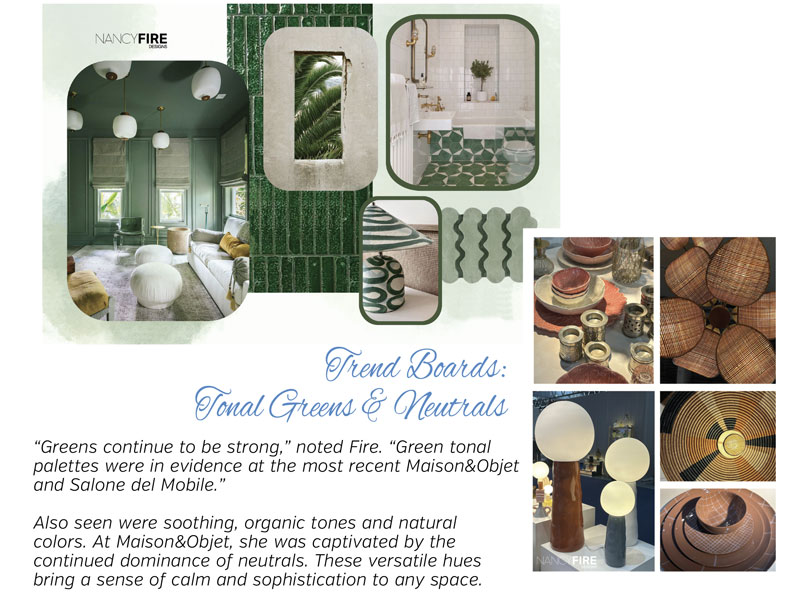
Color, etc.
No matter where a retailer finds itself on the trend curve, whether selling high-end bi-coastal design or in
small-town
retailing, there are common considerations for 2024.
“Everyone’s trying to make sure that they are showing the right color palettes for fabrics, wood finishes and
materials,” Fire observed.
“In general, grays are shifting into neutrals. Plenty of beautiful soft beige neutrals are in the market, as well
as
warm desert tones, sunsets, and sunrises. Also, vicunas, beautiful chocolate and deep browns. These create a
neutral
story that once again looks fresh. Although it’s hard to envision Pantone’s Color of the Year, ‘Peach Fuzz,’
working
on
larger furniture items, I can see it adding warmth to neutrals, working with browns, creams and beiges.
“Plenty of beautiful soft beige neutrals are in the market, as well as warm desert tones, sunsets, and
sunrises. Also,
vicunas, beautiful chocolate and deep browns. These create a neutral story that once again looks fresh.”
“Because of sustainability and environmental awareness, greens continue to be strong. Green tonal palettes were in
evidence at the most recent Maison&Objet and Salone del Mobile. People always gravitate toward colors associated
with
water and the sky. Right now, blues are getting a little richer and brighter with more aqua and turquoise.
“Having said all this, the right color choices can realistically be all over the board depending on the brand,
product
and price point. Over the past two years, we’ve seen mushroom shapes, colors, and beautiful mushroom-inspired
fabrics.
It blew up as a big trend that’s continuing. On a personal note, I’ve become bored with every boucle being shown
in
a
neutral beige. There’s room for manufacturers and brands to try different colors or patterns.
“Furnishings have become more casual and livable, even at the extreme luxury end. There’s little interest in
creating
rooms that don’t appear to be used. It’s part of the shift toward cozy, a quieter side of luxury and working from
home.”
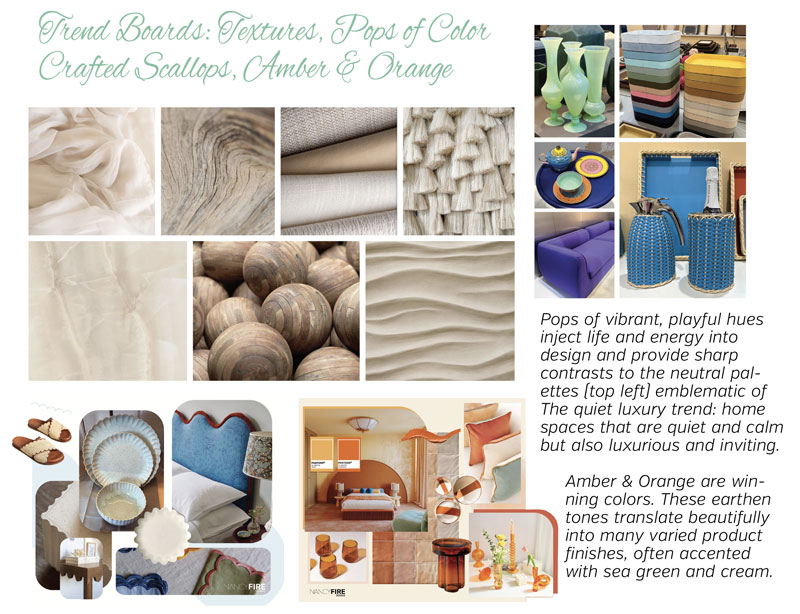
Where to Find Inspiration
In 2018, Fire suggested that Furniture World readers might look to the food industry, fashion (street style), and
wellness industries for inspiration. This time, she added automotive to the list. “Electric cars have moved toward
streamlined sculptural looks with a less-is-more aesthetic, especially for interiors. Incorporated are matte
finishes
versus shiny or iridescent. It is something to pay attention to.
“Something else to consider is how fast fashion has become taboo. Many young people who’ve committed to having
ethical
and sustainable wardrobes won’t shop in stores like H&M or Zara that they consider to be selling throw-out
fashion.
They
are looking for more longevity and are willing to spend more on something built to last.”
“Something else to consider is how fast fashion has become taboo. They are looking for more longevity and
are willing to
spend more on something built to last.”
Conclusion
In conclusion, Fire shared that the best part of her job is learning about new clients, their products, and
customers.
“I love to play with aesthetics,” she said, “and find timely, lasting design solutions. Perhaps I’m just an
eternal
optimist, but I’m excited about our industry and believe we will see big design shifts in the next 18 months,
especially
in retail. In times like these, when business is challenging, fortune often favors those who are open to change.”